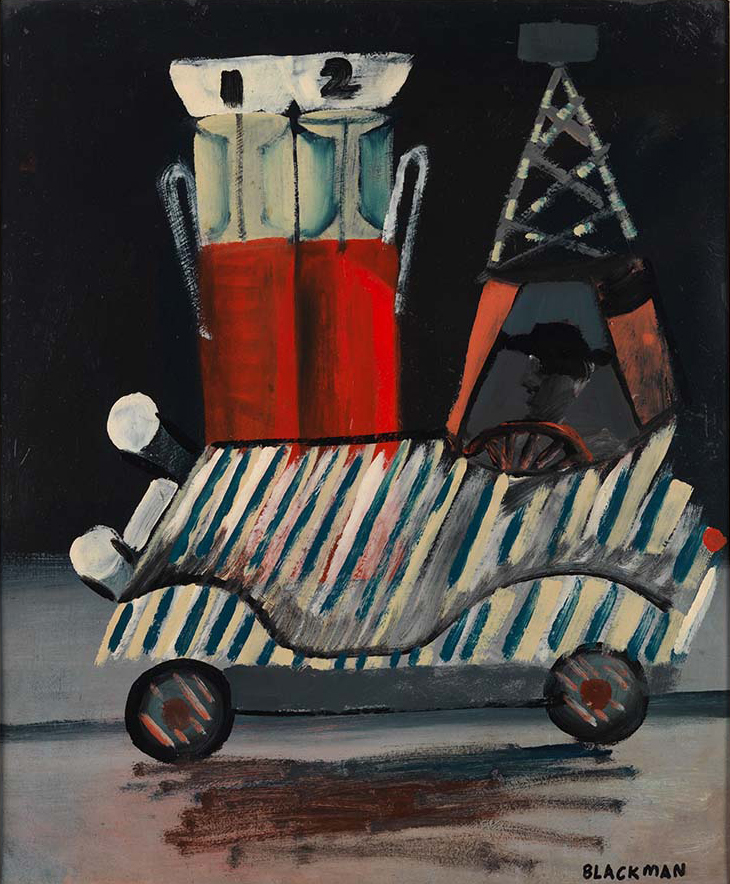We acknowledge the Traditional Owners of the land on which the Queensland Art Gallery | Gallery of Modern Art stands and recognise the creative contribution First Australians make to the art and culture of this country.

Charles Blackman / Australia 1928–2018 / Barnes Auto, Brisbane 1952 / Oil and enamel on cardboard / 72 x 60cm / Purchased 2008 with funds derived from the gifts of Maria Theresa Treweeke, Lady Trout, SH Ervin, Sali Herman, Sir James (Robert) McGregor, Robert Wilson, Captain Neil McEacharn, Naomi and Simon Bracegirdle and Oscar Edwards / Collection: Queensland Art Gallery / © Charles Raymond Blackman/Licensed by Copyright Agency
Charles BlackmanBarnes Auto, Brisbane 1952
Not Currently on Display
With its companion work City lights, Barnes Auto, Brisbane 1952 presents a contemporary picture of the city in the middle of the twentieth century. The work links Blackman and Brisbane with the avant-garde milieu of Heide in Melbourne, where artists similarly depicted local urban environments to evoke psychological tension and a sense of alienation.
Barnes Auto, on the corner of Queen St and North Quay, had a distinct profile in Brisbane: for many years, it was the only location in the city where petrol could be bought after hours. While Blackman’s use of insistent stripes in City lights reveals the influence of Sidney Nolan, the stripes on the car in Barnes Auto, Brisbane echo the blue and white striped livery that Barnes Auto had on their vehicles. The driver’s head is framed by stylised arches of the old Victoria Bridge, whose distinctive profile dominates City lights.
Born in Sydney, Charles Blackman left school before the age of 14. From 1942 until 1947, he worked in the art department of The Sun newspaper, taking evening classes at East Sydney Technical College and at the Meldrum school of painting.
In early 1948, Blackman hitchhiked to Brisbane, where he met many young artists and writers, including the woman he would later marry, Barbara Patterson, who influenced his artistic development. In Brisbane, he was introduced to the work of modern European masters through colour reproductions available in libraries. He was also influenced by an exhibition of Sidney Nolan’s paintings, inspired by Fraser Island.
In the early 1950s, John and Sunday Reed were among the first collectors of Blackman’s work. Sunday Reed introduced him to the poetry of John Shaw Neilson, which informed his compelling ‘Schoolgirl’ series, while his remarkable ‘Alice in Wonderland’ series is infused with references to life at Heide, where the Reeds lived. In 1997, Blackman was awarded an Order of the British Empire for his services to art.